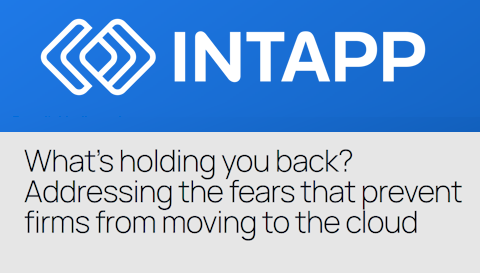Conflicts — Subject Matter Conflicts in Patent Matters, Conflicts and Litigation Finance, Intel on Intel Conflicts Concerns
Posted on
“An Attorney’s Ethical Obligations to the Client in Third-Party Funded Litigation” —
- “The landscape of legal practice has significantly changed due to the proliferation of third-party litigation funding, a financial mechanism that provides capital to plaintiffs, including patent owners, in exchange for an interest related to any recovery. This funding source can be a vital tool for expanding access to justice, particularly for patent owners who would otherwise be unable to afford the high costs of patent litigation, but it introduces several dynamics that require careful ethical consideration from attorneys. After assessing an attorney’s ethical duties of loyalty to the client and client control, attorneys can examine how they are applied and safeguarded in the context of litigation funding, and analyze how state bar ethics opinions and judicial interpretations are guiding attorneys in this evolving field.”
- “At its heart, litigation funding creates a triangular relationship between the attorney, the client, and the funder, which potentially complicates two fundamental ethical principles governing the attorney-client relationship: an attorney’s duty of loyalty to the client and the client’s right to control the litigation.”
- “First, a lawyer’s duty of loyalty compels acting in the best interests of their client without being compromised by conflicting interests. Model Rule of Professional Conduct 1.7 addresses conflicts of interest, stating that a conflict of interest exists if ‘there is a significant risk that the representation of one or more clients will be materially limited by the lawyer’s responsibilities to . . . a third person or by a personal interest of the lawyer.'[1] This rule is particularly relevant when a lawyer advises a client on a funding proposal.”
- “An attorney who affirmatively advises a client to accept a third-party funding arrangement must consider the risk of a future claim that their representation will be ‘materially limited by . . . a personal interest.'[2] This personal interest could stem from the attorney’s or their law firm’s own financial position, including the need to ensure payment of their fees. However, issues associated with Model Rule 1.7(a) can be dealt with by the exceptions to the rule listed under Model Rule 1.7(b). Under Model Rule 1.7(b), a client may waive a conflict by providing the lawyer with informed written consent after full disclosure of the existence and nature of the possible conflict, as long as ‘the lawyer reasonably believes that they will be able to provide competent and diligent representation to each affected client.'[3]”
- “Further emphasizing the importance of professional independence, Model Rule 5.4(a) generally bars lawyers from sharing legal fees with non-lawyers.[4] As the comment to this rule flags, the prohibition on fee-splitting is ‘to protect the lawyer’s professional independence of judgment’ that the lawyer owes to the client.[5]”
- “Second, the principle of client autonomy is a cornerstone of Model Rule 1.2(a), which grants the client the exclusive right to make fundamental decisions regarding the objectives of their representation. This right includes the non-delegable authority to decide whether to settle a matter. The introduction of a third-party funder can, however, introduce complexities in safeguarding this right. For example, while some funders do not receive any control, certain funding agreements may grant funders express or implied control over a lawsuit, thereby interfering with the client’s autonomy. Examples of such control mechanisms may include a funder’s veto power over settlement, conditions for continued funding, or requirements for specific strategic moves.[6]”
- “The ethical challenges presented by litigation funding have prompted various state bar associations to issue opinions that guide attorneys on navigating these arrangements while upholding core professional duties. While the common-law doctrines of champerty and maintenance—which historically prohibited third-party involvement in litigation—have largely been relaxed, their underlying concerns about outside interference and control persist in modern ethical frameworks.[7]”
- “Many of these opinions permit litigation funding but impose conditions, some stringent, to safeguard loyalty and client control. For example, the Illinois State Bar Association has issued an advisory opinion concluding that, although an attorney may assist a client in obtaining third-party litigation funding, the attorney must ensure that the funding agreement does not grant the funder any rights to control settlement, strategy, or other aspects of the litigation.[8] Moreover, the attorney must ‘render independent professional judgment and candid advice to the client’ to comply with Illinois’ ethical rule requiring the attorney to ‘exercise independent professional judgment and render candid advice,’ similar to Model Rule 5.4.[9]”
- “Judicial decisions also offer crucial insights into the ethical boundaries of litigation funding, particularly when arrangements appear to compromise attorney loyalty or client control. The Nimitz opinion from the District of Delaware offers a striking example.[12] In Nimitz, the court examined patent-infringement cases where plaintiff LLCs were allegedly controlled by litigation funder IP Edge and its affiliate Mavexar. The court found that attorneys representing the plaintiff LLCs filed, settled, and dismissed cases without any direct communication with their named clients, and, in doing so, concluded that the attorneys violated the ethical rules on client control and communication.[13]”
- “The court also addressed concerns about loyalty and conflicts of interest, concluding that ‘counsel violated Rule 1.7 and, to the extent their fees were paid or advanced by Mavexar or IP Edge, Rule 1.8(f).'[14] Mavexar’s agreements created ‘potential conflicts of interest between Mavexar and the clients,’ and the attorneys’ ‘blind adherence to Mavexar’s directions to file and settle cases in the clients’ name created a significant risk that counsel’s actions materially limited their representation of their clients.'[15]”
- “Central to Nimitz was the absence of informed client consent to the funder’s directions. This lack of informed consent, especially regarding conflicts and funder influence, constituted a critical ethical lapse in which the attorneys ‘failed to satisfy their ‘ethical obligations of giving [their] clients full and meaningful disclosure of conflicts of interest.’'[16] In other words, the attorneys’ ‘de facto clients were IP Edge and Mavexar’ and their ‘loyalty was not to their clients, but rather to IP Edge.'[17] These findings led the court to refer the attorneys to disciplinary counsel for their state bars.”
- “The Nimitz opinion spotlights a judicial perspective on the importance of maintaining attorney loyalty and genuine client control in the context of funded litigation, emphasizing that an attorney’s obligations to their client remain paramount, regardless of external financial arrangements.”
“Obviously Not! Navigating Subject Matter Conflicts of Interest in Patent Law” —
- “For any attorney, navigating conflicts of interest is a cornerstone of a solid legal practice. The fundamental rules are simple: you cannot represent one client if their interests are directly adverse to another client, or if your duties to a client would be materially limited by your duties to another current or former client, third party, or yourself. However, for patent practitioners registered to practice before the United States Patent and Trademark Office (USPTO), the ethical duties are significantly more complex and nuanced.”
- “The USPTO Rules of Professional Conduct, which are based upon the ABA Model Rules and similar to state rules, impose similar standards. However, patent law as a whole, including the special duty of disclosure provisions at the USPTO, create unique requirements that go beyond the typical ‘direct adversity’ and ‘material limitation’ tests. This special duty centers on the concept of subject matter conflicts, a critical distinction that all patent practitioners must understand.”
- “…For patent prosecutors, the ‘materially limited’ clause is interpreted broadly to prevent a practitioner from representing two clients with competing interests in the same or ‘substantially related’ subject matter.”
- “What is a ‘Subject Matter Conflict’? Unlike litigation, where conflicts often involve two parties in a dispute, patent prosecution conflicts can arise even when two clients are not competitors and may not even be aware of each other.”
- “The key question is whether the two clients’ inventions are substantially related. This means a practitioner may encounter a conflict if they attempt represent Client A to file a patent application in a specific technology are while simultaneously representing Client B for a patent on a substantially related technology area.”
- “Consider this example:”
- “A patent attorney represents InnovateCorp on a new chemical composition for a smartphone battery that improves charging speed. A few months later, a new startup, PowerUp Inc., approaches the same attorney to file a patent for their slightly different battery chemistry that improves battery longevity.”
- “Even though these inventions may be considered novel by the patent attorney, they are in the same narrow technological field, which creates the potential for a subject matter conflict. The attorney’s duty to get the broadest possible claims for InnovateCorp could be ‘materially limited’ by their knowledge of PowerUp’s confidential technology, and vice versa. Moreover, the duty of disclosure, or even an Office Action citing one application over another, may require the practitioner to respond to the USPTO—pinning on client against the other. The answer than many practitioners incorrectly believe is appropriate is to engage in claim shaving—narrowing the claims to allow both clients to obtain patent protection. However, the practitioner cannot ethically engage in such conduct, absent informed consent.”
- “To be clear, simply representing two clients in the same field is not an automatic conflict. However, the stringent subject matter conflict analysis is designed to protect the integrity of the patent system and the practitioner’s core duties of confidentiality and zealous representation.”
- “Duty of Confidentiality (37 C.F.R. § 11.106): A practitioner representing two clients in a similar technology space will possess confidential information from both companies. It becomes nearly impossible to ensure that knowledge of one client’s unpublished invention and patenting strategy doesn’t subconsciously influence the advice and claim drafting strategy for the other.”
- “Duty of Competent and Diligent Representation (37 C.F.R. §§ 11.101 and 11.103): To zealously represent a client, a practitioner must strive to obtain the broadest patent protection possible. This might involve drafting claims that could foreseeably limit the patentable territory available to another client working in a related area.”
- “Can These Conflicts Be Waived? Yes, but with significant caveats. A practitioner can proceed despite a conflict if they reasonably believe they can provide competent and diligent representation to both clients, and if each affected client gives informed consent, confirmed in writing.”
- “The practitioner must clearly explain the existence, nature, implications, and potential risks of the conflict. The client must fully understand how their attorney’s representation of another party could potentially impact their own patent strategy and the scope of their intellectual property rights before they can validly consent.”
- “One point of concern is whether a solo practitioner can appropriately ensure that the best interests of each of the clients is protected. Conversely, practitioners in larger firms can explain to their clients that the other matter may be handled by a separate team, and include an ethical screen. Moreover, the division of labor between teams also prevents the imputation of the duty of disclosure. That is, while conflicts are imputed to others within the firm under 37 C.F.R. § 11.110, the duty of disclosure is personal to those substantively involved in the preparation or prosecution of that application.”
Above the Law notes: “Skadden Advises Intel On Trump Deal, Because What Are A Few Obvious Conflicts Among Friends?” —
- “Intel just agreed to give the federal government a roughly 10 percent ownership stake. It’s reportedly a common stock deal that binds the federal government to vote with the board unless the board is voting to undermine the deal itself. The deal is a payoff for the CHIPS Act, a $280 billion funding authorization to boost the domestic semiconductor industry. The Biden administration pushed for the funding, Trump pushed for the vig. Theoretically, the equity stake belongs to the government and not Trump personally, but we thought that about Air Qatari One too.”
- “The company needed lawyers to protect its interests in making such a consequential deal, so it turned to… a law firm that agreed to give Trump $100 million in free gifts in exchange for settling an attack on their ability to stay in business. It’s the sort of fact pattern a professional responsibility professor couldn’t put on an exam or they’d be laughed out of the academy: a sophisticated client, a well-heeled firm, and a high-stakes extortion effort.”
- “To be honest, I’ve always thought deals like this made a lot of sense. The federal government took an ownership stake in GM in exchange for its bailout during the Obama administration. As a consequence, when the manufacturer came back, taxpayers were much better off than when they went in. For all the scare-mongering over socialism, the American economic system already rests on capitalistic gains and socialized losses. Taking an equity stake lets the taxpayers in on the gains too. It also helps avoid ‘picking winners and losers’ if the beneficiaries of government cash have to share a slice of their gains with the public that their better managed competitors don’t.”
- “Intel is not a mom-and-pop cobbler blissfully unaware of its lawyers’ dealings. It’s a sophisticated party that knew Skadden is $100 million in hock to the Trump administration. Indeed, it likely counted on it.”
- “The Trump administration walked up to Intel and said, ‘nice little funding authorization you got there… shame if something happened to it,’ and Intel immediately turned to lawyers who already surrendered to a similar threat for advice. It’s not because they were thoroughly impressed with Skadden’s brilliant negotiation there (if they were impressed by that… then maybe it explains why they needed a bailout).”
- “And Intel is exactly the sort of client the rules trust to make an informed waiver.”
- “While professional responsibility focuses primarily on the client, it’s also — at least somewhat — a matter of protecting public trust in the profession. Just because the client can waive a conflict doesn’t mean it’s good for the legal industry to have firms owing the government still unfulfilled nine-digit settlements while ostensibly negotiating against it. That’s how the public loses its already rock bottom faith in lawyers.”
- “Ideally, ethics rules shouldn’t just exist to keep dumb clients from getting tricked. They should also keep smart clients from normalizing corruption.”









